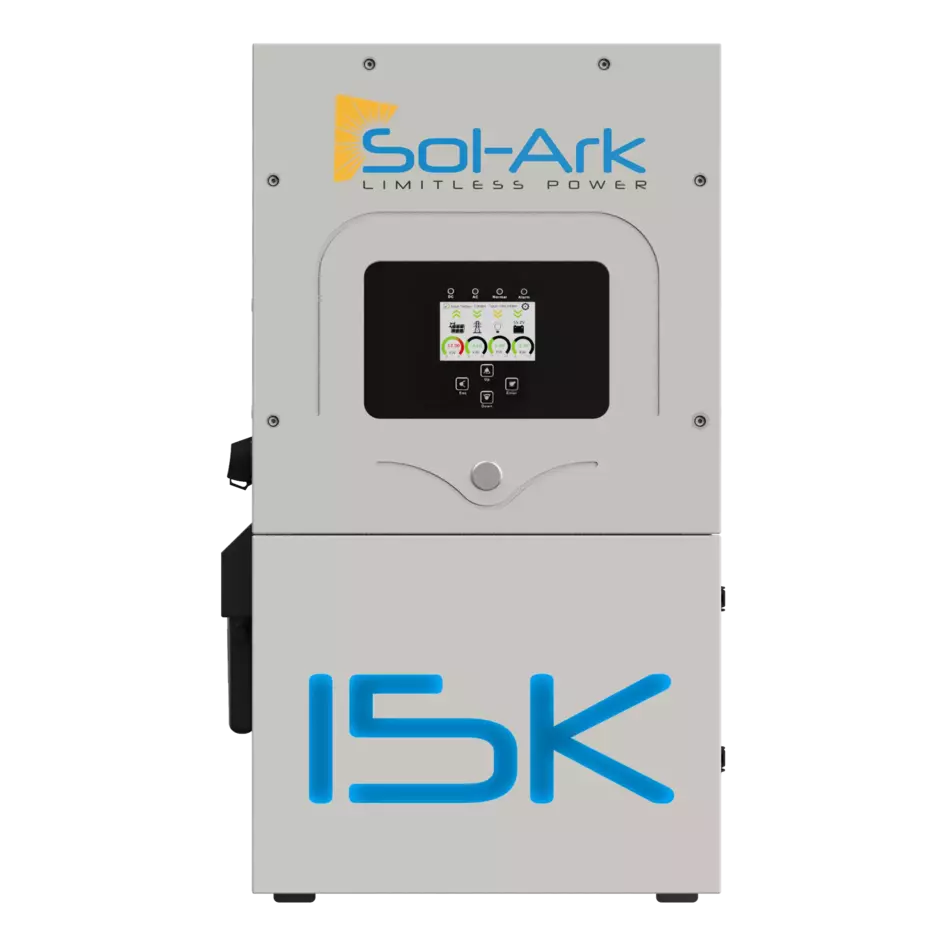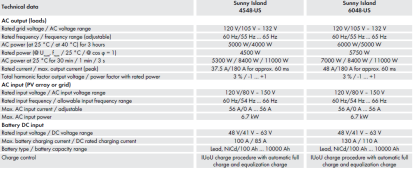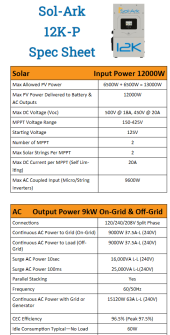Sounds to me like you have to be careful and really read the specs.
A Sunny Island 6048 looks like it can do 6,000 watts, right? Yes, sort of. See below. It can do 6,000 watts at 25C for 3 hours. At 40 C it can only do 5,000 watts for 3 hours. I think it can do 5,750 watts continuously. But see also that it can do 11,000 watts - but only for 3 seconds.
Solark name seems to be somewhat confusing. Then the Sunny Island could also be named "11048-US" (meaning it could do 11,000 watts). The 12k in the solarc name seems to be referring to the max pv power you can connect, not max ac output. 12k of pv then = 9k of ac.
I trust the SMA specs. If they say 11,000 for 3 sec then that I believe it. A big ac can pull 90 amps on startup and that is 21,600 watts (on 2 inverters) and the SI's handle it. The trouble is that with some specs, they are just made up. (How often can you trust that a 280ah lithium grade A battery really is that?). I don't see anything in the sol arc that says you are limited to 4,500w per leg. Or am I missing something?
Even with a Sunny Island system, you probably should not load 1 of the inverters with more than 5700 watts or you could have the same problem. 240V loads load both legs equally I imagine. Probably we we have 200 amp services so we don't run into issues like this. Probaly also why load centers alternate the 120V breakers - to keep the loads as even as possible.
Is any Sol Aarc user going to label all their 120v outles and say which leg they are on? - "better use the right outlet so we don't trip the inverter."
With all this, maybe the Sol Arc should be though of as 2 4,500w inverters in 1 box where you can plug 12kw of pv into.
View attachment 100754
View attachment 100758








